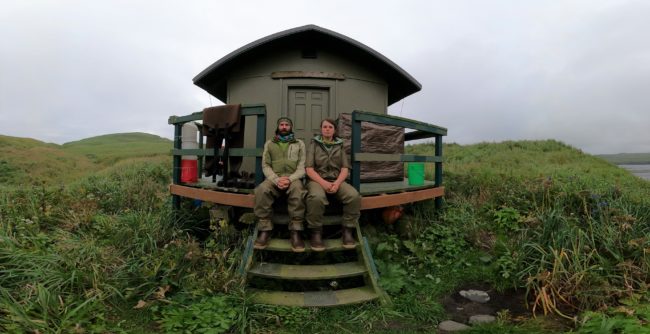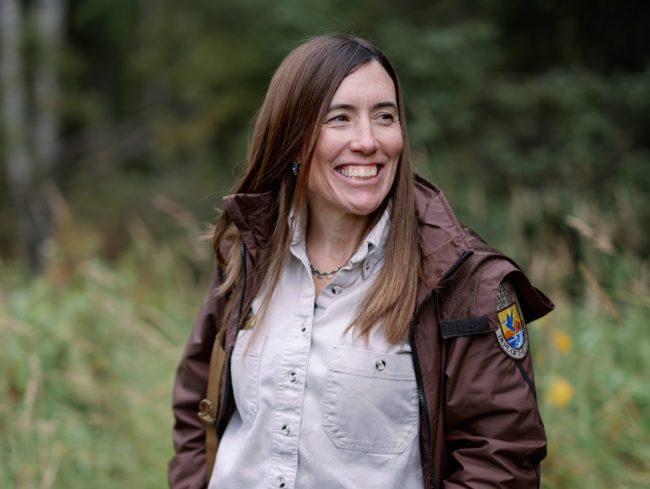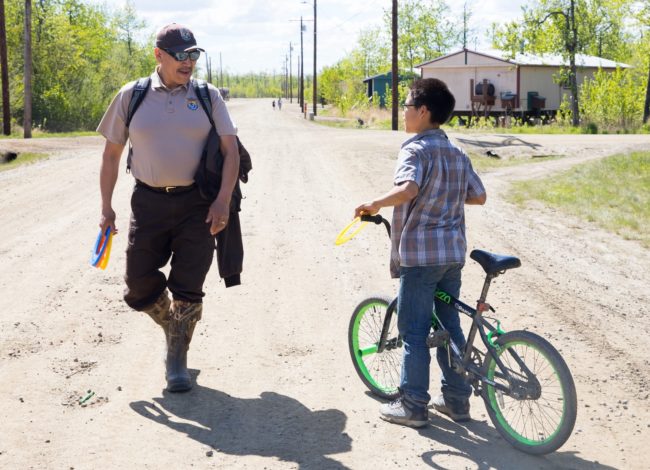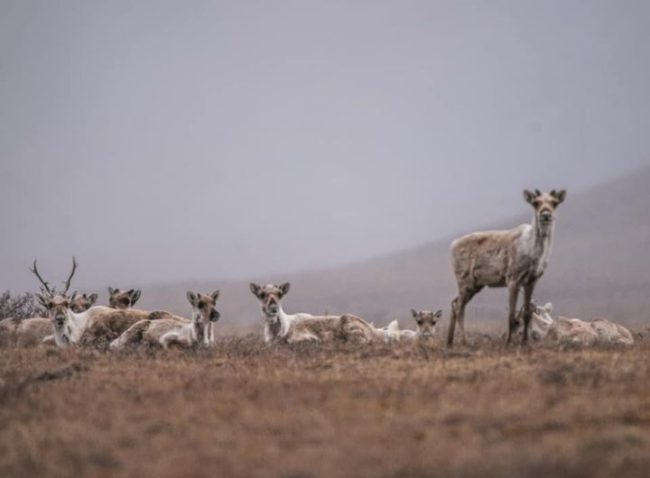Presented by the Gaia Girls, Laura Pillifant and Mary King
The recording of the zoom meeting can be found below. Please note that this presentation was held before a live audience at Kenai NWR.
Birding the Arctic National Wildlife Refuge with Bird Guide Aaron Lang
Monday, December 4, 5:30pm, AKT.
Live in Homer at Alaska Maritime Wildlife Refuge’s Visitor Center or on Zoom.
You can view the recording of the live event below:
Aaron Lang will share stories and stunning photography at the Kachemak Bay Birders monthly meeting about the unique wilderness birding experiences to be found in the Arctic National Wildlife Refuge. All are welcome to attend or zoom in. Aaron, widely considered one of Alaska’s top birding guides and a downright nice guy, will draw from his 21 years of exploring, birding and guiding in the Arctic Refuge. Aaron is the co-owner of Wilderness Birding Adventures based in Homer and was the guide for the Friends of Alaska National Wildlife Refuges’ trip to the Marsh Fork of the Canning River in the Arctic Refuge last summer.
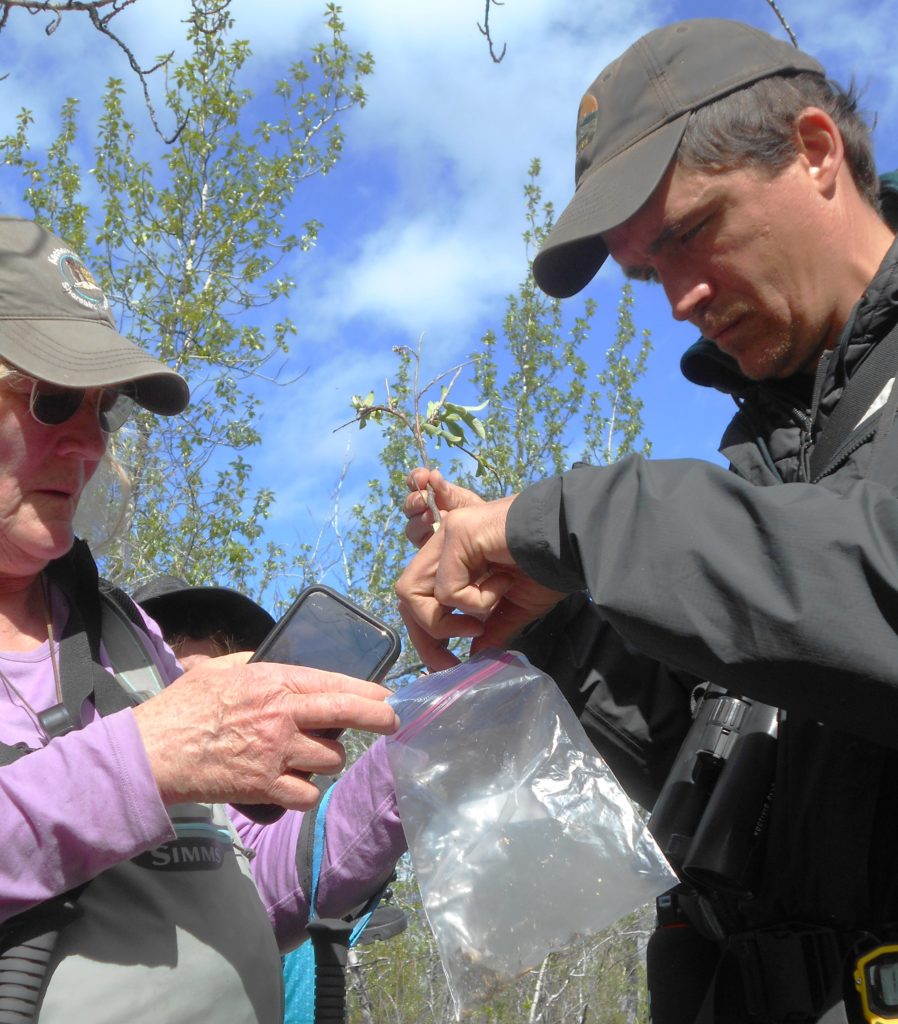
Aaron collecting feathers from an abandoned nest cavity for Gray-headed Chickadees. No birds were found on the 2023 trip. The feathers were collected for possible DNA analysis. pc: Nancy Deschu
Approximately the size of South Carolina, the 19-million-acre Arctic National Wildlife Refuge has no roads or facilities. The lands and waters are a critical nursery for birds who migrate and winter throughout North America and beyond and is an important home for iconic resident wildlife such as caribou, musk oxen and polar bear. The refuge presents a unique, wilderness birding experience and contains the largest designated Wilderness within the National Wildlife Refuge System. Birds commonly found along the Arctic’s rivers include nesting shorebirds such as Wandering Tattler, Upland Sandpiper, and American Golden-Plover and Golden Eagles, Arctic Warbler and Smith’s Longspurs.
This program will be recorded and posted HERE within a few days.
Aaron began birding in southern Minnesota at age 11 when the curious behavior of a Northern Flicker caught his eye, and he’s been hopelessly addicted to birding ever since. Combining bird-related work with a passion for travel has led him to adventures in Brazil, Tibet, Thailand, Vietnam, Cambodia, and Bhutan. After settling in Alaska, Aaron spent several years running environmental education programs for the Prince William Sound Science Center in Cordova, all while scheming on how to turn his birding obsession into a career. In 2002, he began guiding for Wilderness Birding Adventures and, after 11 years, Aaron and his wife Robin bought the business.
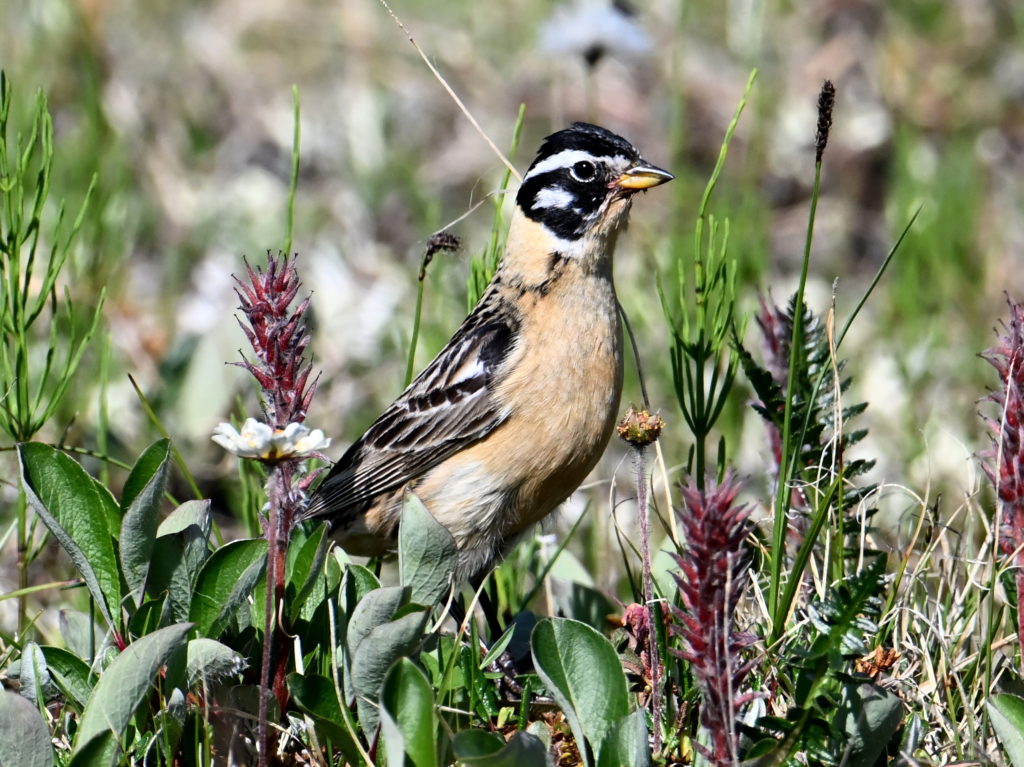
Smith’s longspurs were frequently spotted on the Marsh Fork last summer. PC Jerry Britten
Aaron has served on the Alaska Bird Checklist Committee since 2009, the American Birding Association Checklist Committee (2015-2022), and the board of Audubon Alaska since 2019. He currently holds the Alaska Daydream Big Day Record for the most species of birds thought about in one 24-hour period.
This Kachemak Bay Birder Meeting is cosponsored by the Alaska Maritime National Wildlife Refuge with the zoom and recording capabilities provided by Friends of Alaska National Wildlife Refuges.
Waterfowl on the Yukon Delta
Tuesday, October 17, 5-6 pm AKDT, Randall Friendly, Waterfowl Biologist
This presentation was recorded; watch recording below.
- Bethel – Randall, Yukon Delta National Wildlife Refuge Waterfowl Biologist, will be speaking live at the Refuge Visitor Center (across from the hospital) with potluck to follow. Bring your favorite dish to share.
- Homer – Watch Party with snacks at Alaska Maritime’s Islands & Ocean Visitor Center
- Soldotna – Watch Party at Kenai Refuge Visitor Center on Ski Hill Road
- Kodiak – Watch Party at Kodiak Refuge Visitor Center
The vast, watery Yukon Delta Refuge nestles between Alaska’s largest rivers, the Yukon and the Kuskokwim Rivers, where the tundra meets the Bering Sea. At 19 million acres, Yukon Delta has edged out the Arctic Refuge as the largest wildlife refuge in the country. Its diversity of habitats supports one of the largest aggregations of waterbirds in the world. Presenter Randall Friendly was raised on this land, went off to college and has recently returned as waterfowl biologist for the Yukon Delta Refuge. Let him show you his homeland and hear from him why waterfowl has so inspired him. He will talk about how and why the refuge manages waterfowl from banding programs with Cackling geese and Brant and capture-mark-recapture with Emperor geese.
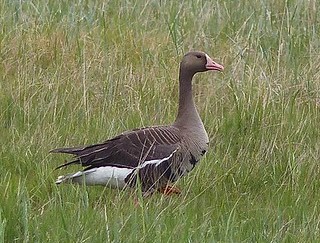 Greater White-fronted Goose, Kigigak Island, Yukon Delta National Wildlife Refuge pc: Kristine Sowl, USFWS
Greater White-fronted Goose, Kigigak Island, Yukon Delta National Wildlife Refuge pc: Kristine Sowl, USFWS
Biography by Randall Friendly: I am from Tuntutuliak a Yupik village of about 800 people. It is located along the Kuskokwim River on the Yukon Delta National Wildlife Refuge in western Alaska about 40 miles downriver from Bethel, the largest town on the Delta. I grew up with a subsistence lifestyle of hunting and fishing with my family. I found out I wanted to work with ducks and geese after my first season working as a technician for the US Fish and Wildlife Service working in remote places on the Yukon Delta. I saw how incredible it was to see the diversity of nesting birds like on Kigigak Island. Since then, I decided one day I wanted to continue working with waterfowl and learn more about them. With mentoring by ANSEP (Alaska Native Science & Engineering Program) I studied for my Bachelor’s at the University of Alaska Anchorage in biology. I completed my Master’s from the University of Alaska Fairbanks this summer in wildlife biology. My thesis was on threatened Spectacled Eiders and how their wintering conditions affect reproduction. While in college, I had a chance to work on Kodiak, and Arctic Refuges as well as Yukon Delta. What I like most about my job is that I get to work with amazing people who are enthusiastic about wildlife and that I get to work outside of the office environment.
I recently moved to Bethel to work full time for the Yukon Delta Refuge as a waterfowl biologist. I have been enjoying some family time after being away for college for quite some time. I like to spend time outdoors whether it is fishing, hunting, or gathering. Having moved to Bethel, I am looking forward to the opportunities to enjoy the outdoors with family and friends.
Read an interview with Randall about how the ANSEP program welcomed a boy from the village and helped him realize his dreams. And hear from Randall in this podcast about his hopes for his work, a chance to inspire others and his masters work on spectacled eiders.
Walk for the Wild 2023, Across Alaska!
Let’s take a moment to celebrate the incredible Refuge Staff and Friends Volunteers that have taken action to help Wildlife Thrive in Alaska! AlaskaTeam16! held 4 LIVE events, drawing 130 participants, which were held in.
- Bethel
- Homer
- Kenai
- Kodiak
- All assisted by Friends Members/Volunteers
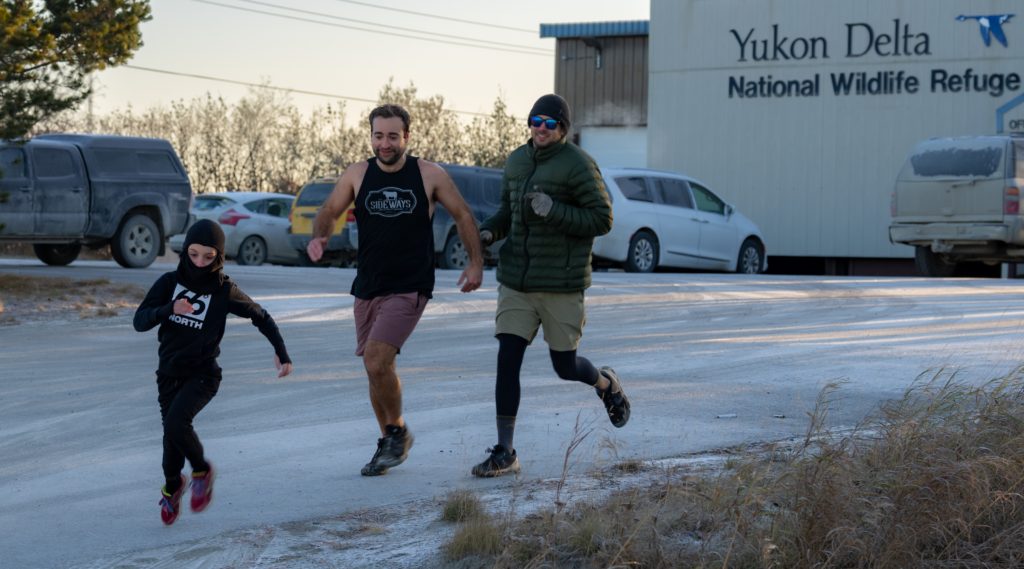
Runners for Yukon Delta Refuge in Bethel!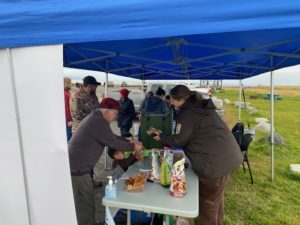
Alaska Maritime Refuge sign-in and snacks table on the Homer Spit Trail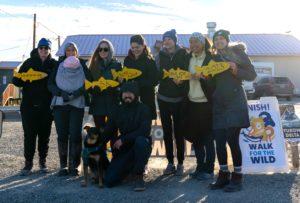
- Finishers at the Yukon Delta Refuge 5K.

Kodiak Refuge Staff & Friends volunteer Leslie Slater
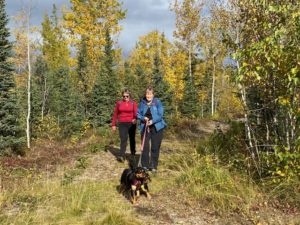
Walk for the Wild walkers on the Marsh Lake Trail, Kenai National Wildlife Refuge.
We also offered Virtual option for folks to Walk for the Wild wherever they were, along with a link to podcasts on our Refuges to be listened to while walking and folks from throughout the country did just that
We had a dream goal of $16,000… one day! We raised $1704 with help from the PLA Amplifier Fund. Our Team was 15th in the country! Those funds will be deposited into the Friends unrestricted funds for allocation to refuges in response to requests.
Walk for the Wild is a signature event of the NWRS Rebranding Campaign, a multi-year rebranding and activation campaign to invite new generations of Americans to fall in love with America’s national wildlife refuges and increase private support for the National Wildlife Refuge System and expand the demographics of Friends members and volunteers. PLAN on participating in 2024!
Journey of Landscape and Light with Photographer Taz Tally
Thursday, September 28⋅6:30 – 7:30pm
From Aahaaliq to Ulu: Culturally relevant environmental education. 2/21, 5 – 6 p.m. (AKT)
Presented by Brittany Sweeney, Outreach Specialist, Selawik Refuge
What should environmental education be like on Alaska’s National Wildlife Refuges that are simultaneously public lands and homelands for Indigenous peoples? Iñupiaq residents in northwest Alaska have deep knowledge and longstanding connections to these lands that are now part of Selawik Refuge. In their environmental education program, Selawik Refuge centers cultural relevance, uplifting traditional stewardship, and building community partnerships. The annual Selawik Science-Culture Camp is a key example of this approach, but you can also see it in all of the refuge’s outreach and management approaches.
Bird Camp! A Summer Season on Aiktak Island with Sarah and Dan: Tuesday, 4/19, 5–6 pm (AKDT)
Presentation by: Sarah Youngren & Dan Rapp,
Alaska Maritime National Wildlife Refuge Biological Technicians
Watch Presentation (Youtube)
Post-presentation Q&A:
There are islands in Alaska where hundreds of thousands of seabirds gather annually to breed. These islands are critical to the survival of these species. Imagine yourself living on one of these islands with one other person. Sound picturesque? It is, but you won’t be spending your days sipping umbrellaed drinks while lounging on the beach. You’re here to do a job. You’re here to collect long-term monitoring data on the seabirds (and other species) that breed on your island. You’re going to be cold, wet, and generally uncomfortable for most of your stay. It’s not an easy life, but it’s worth it. You’ll see and hear things very few ever will. You’ll get to collect data that monitors the health of Alaskan seabird populations and the ocean they, and mankind, depend on for survival. Join Sarah and Dan for a summer field season on Aiktak Island, in the Eastern Aleutians, as biological technicians for the Alaska Maritime National Wildlife Refuge. They will show you what it takes to work in this rugged and remote refuge.
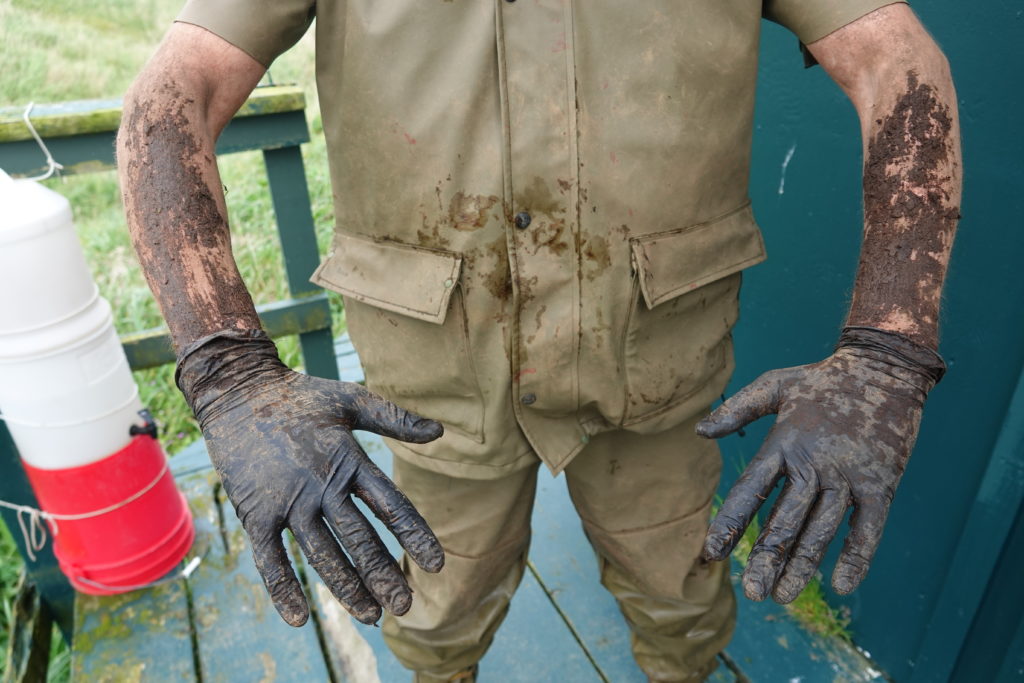
Sarah Youngren and Dan Rapp are seabird researchers. Most people have no idea what they do, because they work where very few people go and with species that spend most of their lives at sea (or in these places few people get to go). Between Sarah and Dan, they have 28 years of experience working with seabirds on remote islands in Alaska and Hawaii (and a stint in Louisiana). They both started their professional careers working with Alaskan salmon, and dabbled in other fieldwork, but both eventually found their way to a remote seabird colony. All parts of living and working on these islands spoke to them, and their addiction hasn’t let up. They have worked with a plethora of seabird species, ranging in size from the armful Black-footed albatross, to the fit in your palm Leaches storm-petrel. Most of the data they collect contributes to long-term datasets for the purpose of detecting trends / changes within seabird populations. But they also conduct and participate in original research, most recently they helped outfit albatross with tags to track their movements across the North Pacific from their breeding colony at Midway Atoll National Wildlife Refuge. Both Sarah and Dan earned their Masters degrees in marine science from Hawaii Pacific University in 2015, with theses that addressed patterns and impacts of plastic ingestion in Hawaiian seabirds. After completing their graduate work, they returned to seasonal fieldwork. Since 2015 they have been spending summers working for Alaska Maritime National Wildlife Refuge, specifically on Aiktak Island in the Eastern Aleutians.
An Eye to the Future: Stewarding the Kenai National Wildlife Refuge: Tuesday, 2/15, 5 – 6 p.m. (AKT)
Kris Inman, Kenai National Wildlife Refuge Supervisory Wildlife Biologist
This meeting’s presentations were recorded. Watch below:
Christina Nelson, Selawik National Wildlife Refuge:
Intro to Selawik
Kris Inman, Kenai National Wildlife Refuge:
Stewarding the Kenai National Wildlife Refuge
(This recording has been edited to include the wolverine footage that wouldn’t play during Kris’ presentation.)
This is a time of unprecedented, profound, and rapid human-driven environmental change. In her presentation, Kris will share a few of the Kenai biology team’s many projects that give a big-picture view of how wildlife populations and habitats might be changing or impacted by landscape issues like climate change and human population growth. Changing water temperatures in salmon streams, increased traffic on the Sterling Highway, more people living and recreating around the refuge and the spread of non-native species are a few of the human caused impacts to the refuge wildlife that Kenai biologists and agency partners are addressing.
Kris will share new technology like thermal imagery to document and understand the impact of water temperature changes on our world-famous salmon rivers that sustain bears, eagles, and people. She will also share results from the Refuge’s efforts to minimize the impact of increased human presence on the Kenai including the effectiveness of Alaska’s first wildlife road crossing project to provide safe movements for wildlife across the busy Sterling Highway which splits the Refuge. She will also highlight collaborative efforts to eradicate or control the spread of non-native invasive species like pike, elodea, white sweet clover, bird vetch, and reed canary grass that influences salmon habitat or encroach on native vegetation. In doing so, the biology team, working with refuge staff and many partners, will meet the station’s vision of stewarding the lands and waters with an eye to the future, so the Refuge’s diverse and abundant wildlife remain for the enjoyment and well-being of generations to come.
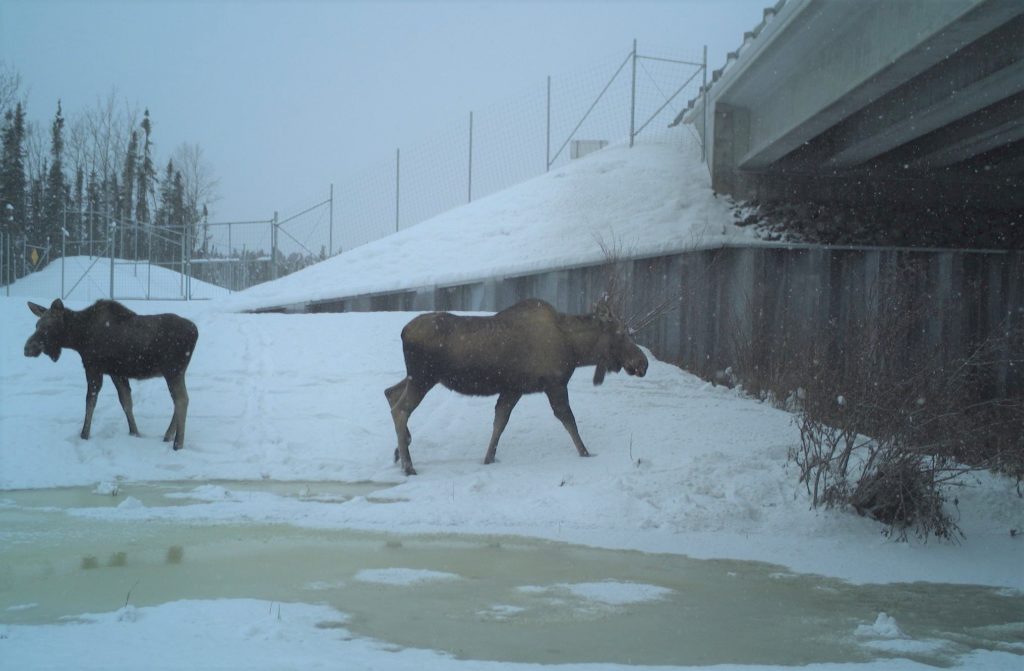
Moose using the new Sterling Highway wildlife underpasses. Fences funnel wildlife to the underpasses of this increasingly busy highway. Kris will discuss what the refuge has learned about the effectiveness of this project.
Kris Inman recently joined the Kenai National Wildlife Refuge as the Supervisory Wildlife Biologist. Before coming to Alaska, she worked on a wide range of wildlife research and inventory and monitoring projects, from the little-known Tomah mayfly and freshwater mussels to more charismatic species like wolves, bears, and wolverine. Kris received a Bachelor of Science degree from the University of Maine and a Master of Science degree from Virginia Polytechnic Institute and State University.
She spent the last twenty years living, working, and raising her family in the lands outside of Yellowstone National Park, where she and her husband co-led a collaborative wolverine research study for the Wildlife Conservation Society. This project eventually would contribute the largest body of science on wolverines in the lower 48 and would identify the biggest conservation needs: to restore, connect, and monitor wolverines across their current and historic range.
From there, Kris switched from researcher to implementor. She worked with broad stakeholder groups in SW Montana to apply wolverine science in a region critical to wildlife connectivity for not only wolverines but also migratory ungulates and recovered grizzly bear and wolf populations. As the Coordinator of Strategic Partnerships and Engagement for the Wildlife Conservation Society, she brought stakeholders together to develop tools to reduce negative human-wildlife interactions. She also explored and implemented natural climate adaptation strategies like beaver mimicry to improve private working ranchlands’ economic and ecological sustainability as critical corridors to public lands.
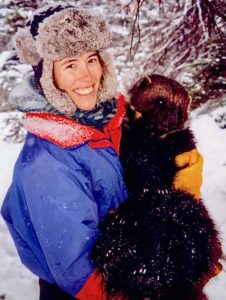
Kris holding a wolverine!
In 2018, the Disney Conservation Fund named Kris a Disney Conservation Hero for her contributions to science and engaging and empowering communities to take science to action. Kris was also selected as an American Association for the Advancement of Science IF/THEN® Ambassador, a network of 125 women STEM (Science, Technology, Engineering and Math) professionals from around the country who share their professional stories so young girls see that a career in STEM is possible.
Kris sees the Kenai Peninsula as similar to the Greater Yellowstone Area in its global significance as a large, intact, wild landscape, diverse in its wildlife while grappling with the challenges of rapidly growing nearby communities seeking solitude and world-renowned outdoor experiences.
Kris is glad to be a part of the Kenai Refuge and the larger refuge team in Alaska. She works with colleagues who recognize that conserving these great places will take a new future-oriented approach to conservation, and they are committed to developing solutions to meet the challenges of this century. At the same time, this work recognizes that people are part of nature and not separate from it. Seeing people in this light, we no longer just identify people as the problem but also the solution.
Bridging the Gap/Usguciaraq: Tuesday, 1/18, 5 – 6 p.m. (AKT)
This meeting’s presentation was recorded: watch below.
This recording does not include Jacqueline Cleveland’s video (not yet released).
Christopher Tulik of the Yukon Delta National Wildlife Refuge and Jacqueline Cleveland of the Togiak National Wildlife Refuge, both Yupik, will present on their work as Refuge Information Technicians (RITs). Christopher’s intimate knowledge of the Yupiaq language and culture, the local area and the people make him a valuable liaison between the Refuge and those who live in the communities on and around the Yukon Delta Refuge. He travels by boat, snowmachine and plane to make personal visits to dozens of small subsistence communities. During the visits, he informs residents about Refuge-related conservation work, hunting and fishing opportunities, and other topics that are important to subsistence harvest. He also hears their concerns and local knowledge of fish and wildlife matters and ensures this is communicated to Refuge staff back at refuge headquarters. Jacki is new to her role as an RIT for Togiak National Wildlife Refuge. She will share with us the essence of subsistence life in her village of Quinhagak through her outstanding photography and videography.
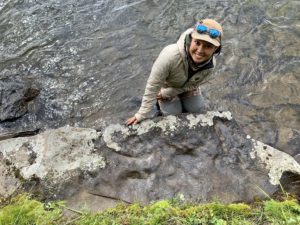
Jacqueline with sauropod dinosaur tracks on the Togiak Refuge.
Christopher Tulik was born in Bethel and raised in Nightmute, a small village on Nelson Island along the western Bering Sea coast of the refuge. Growing up in a traditional subsistence lifestyle has given Christopher an understanding of the importance of fish and wildlife to the culture of local Alaska Native people. Christopher has said he became interested in working with wildlife when he was very young and became aware of the fish and wildlife all around him that sustained his family in all seasons. He learned respect for nature from watching his father and older brothers returning from the hunt and how the catch had been properly handled.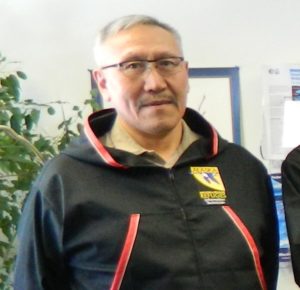 Christopher Tulik
Christopher Tulik
He was one of the youngest Refuge Information Technicians (RITs) hired when the program began in 1984. After a break, he returned to serve as an RIT in 2014 to assist the Refuge with outreach, education and tribal consultation. Christopher Tulik recently accepted a position as the Lead Refuge Information Technician (RIT) for the Yukon Delta National Wildlife Refuge. In this position Chris will supervise up to five permanent RITs. You can read more about Chris’s life and work here.
Nalikutaar (in Yup’ik) or Jacqueline Cleveland was raised in Quinhagak, Alaska where she currently lives with her fiancé, Franko and dog, Pumba. Jacki received her Bachelor of Art’s degree from Montana State University in Media and Theatre Arts and Native American Studies. She is a subsistence hunter, fisher and gatherer, a freelance photographer/videographer, and recently accepted the job of Refuge Information Technician for the Togiak National Wildlife Refuge.
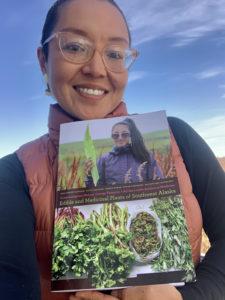 Jacqueline Cleveland with the book that features her photographs.
Jacqueline Cleveland with the book that features her photographs.
Jacki has had her photographs published in numerous publications most notably in the 2020 book from the University of Alaska Fairbanks press, Yungcautnguuq Nunam Qainga Tamarmi/All the Land’s Surface is Medicine: Edible and Medicinal Plants of Southwest Alaska, for which she did most of the photography. Jacki recently completed a film project with BBC on Nelson Island in which she served as location manager. The segment on muskox in rut filmed on the island will be part of the Earth’s Great Rivers II to be out this spring on BBC. Jackie is currently finishing up work on a film about climate change that she co-directed, served as cultural advisor for, as well as did some of the filming. Ellavut Cimirtuq/Our World is Changing will also be out this spring.
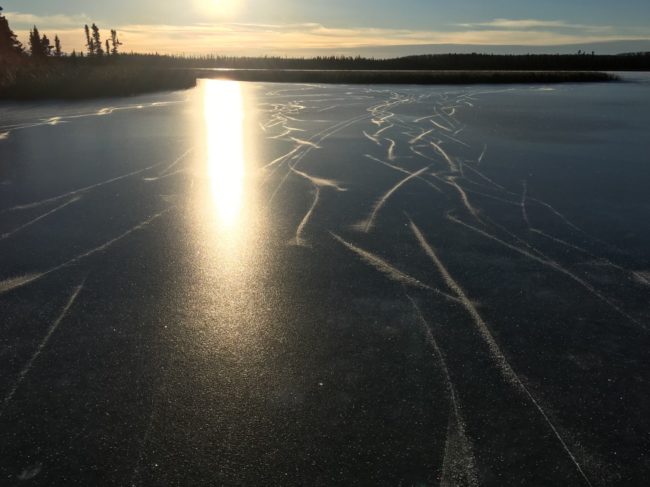
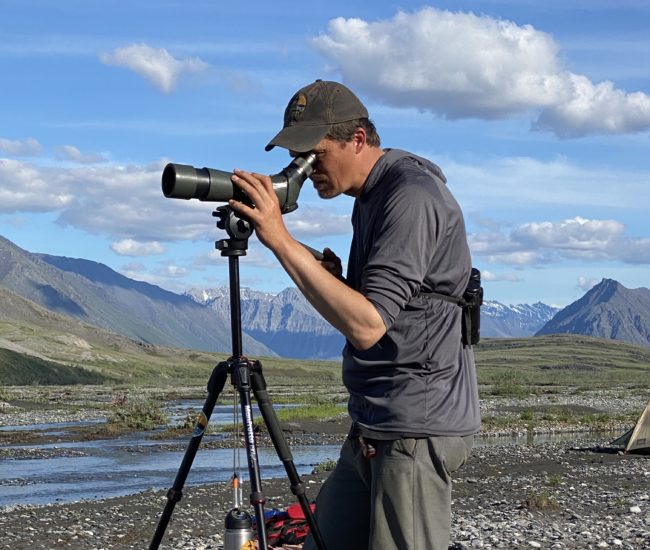
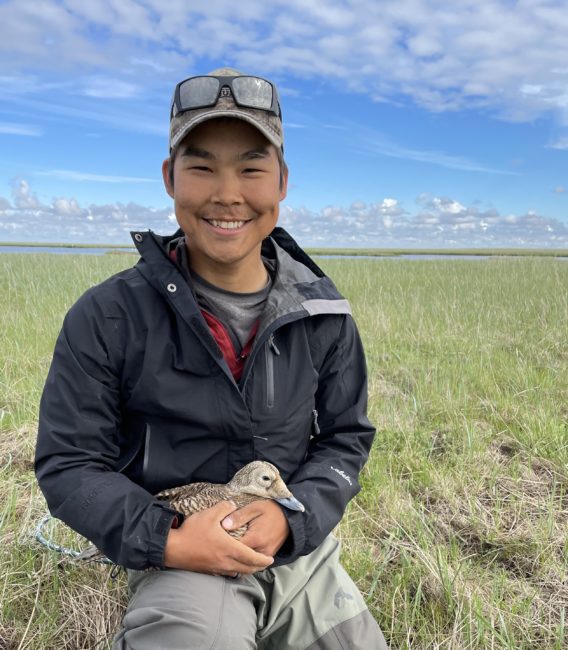

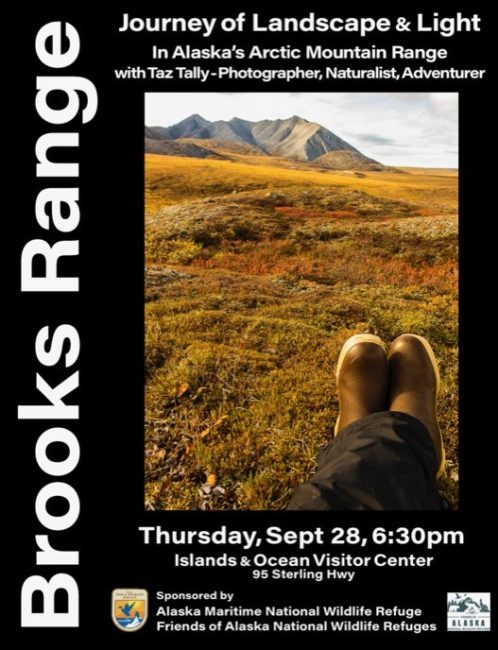
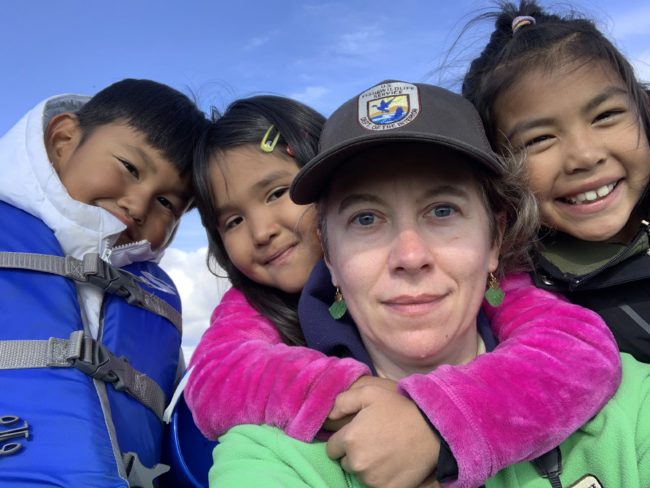
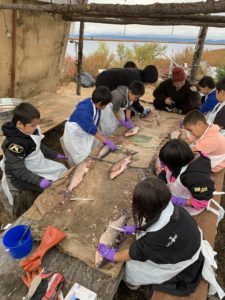 ‘
‘